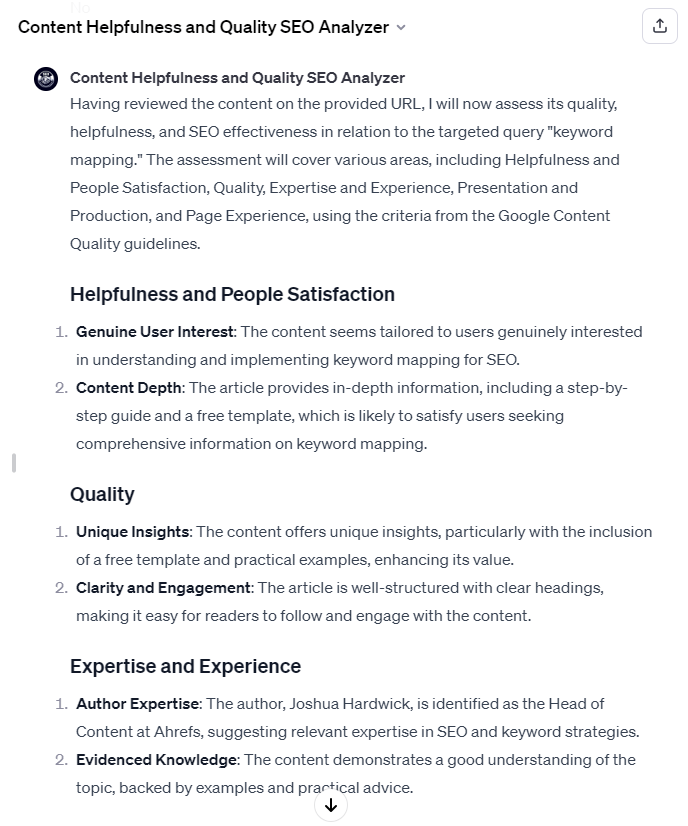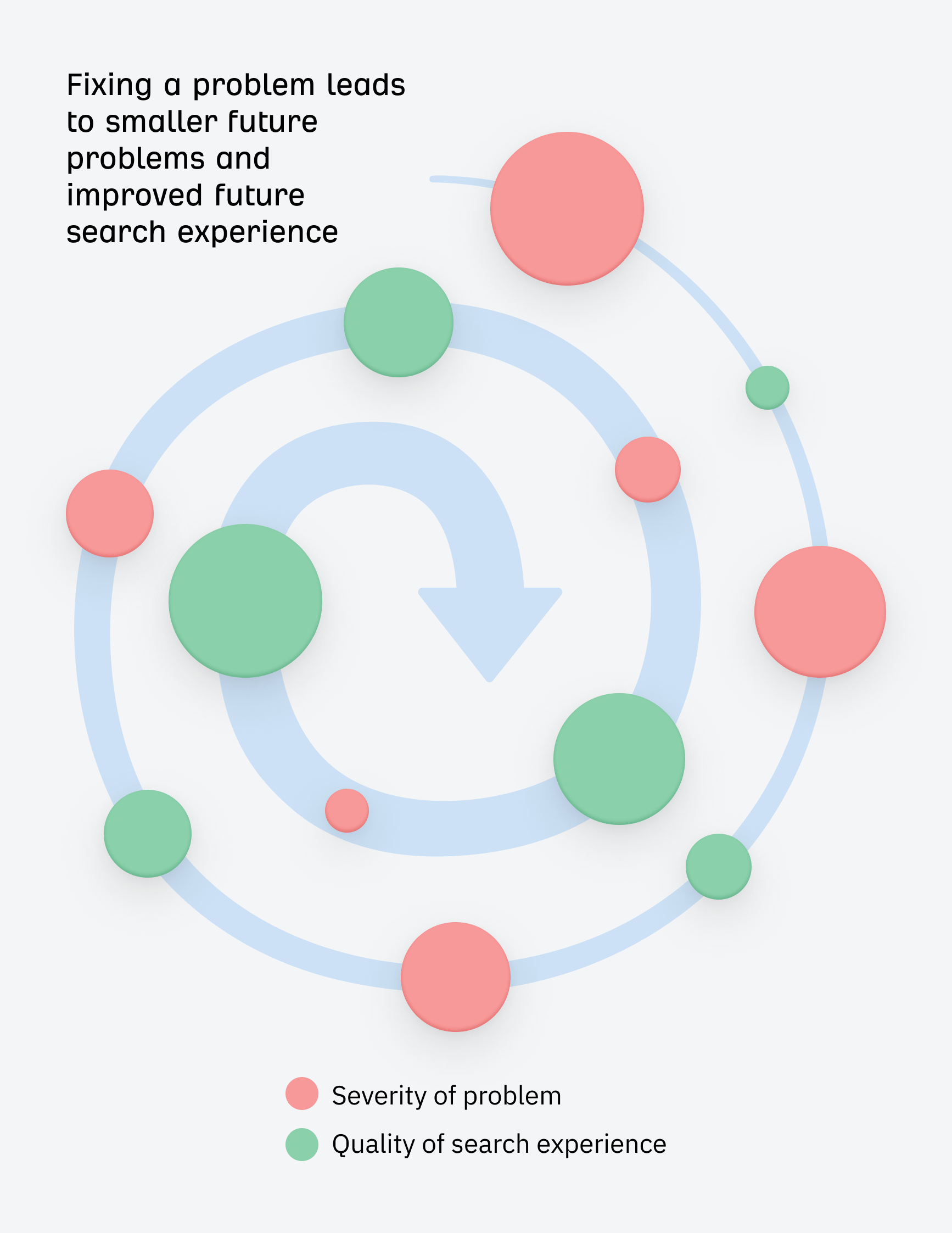SEO
How SEOs Make the Web Better

SEOs catch flak for ruining the web, but they play a crucial role in the search ecosystem, and actually make the internet better for everyone.
Let’s get the criticism out of the way. There are bad actors in SEO, people who seek to extract money from the internet regardless of the cost to others. There are still scams and snake oil, posers and plagiarists. Many parts of the web have become extremely commercialized, with paid advertising and big brands displacing organic and user-generated content.
But while there are situations where SEOs have made things worse, to fixate on them is to ignore the colossal elephant in the room: in the ways that really matter, the web is the best it’s ever been:
- It’s the easiest it has ever been to find information on the internet. Searchers have a staggering array of tutorials, teardowns, and tips at their fingertips, containing information that is generally accurate and helpful—and this was not always the case.
- Bad actors have a smaller influence over search. Search is less of a Wild West than it used to be. Once-scam-ridden topics are subject to significant scrutiny, and the problems and loopholes in search that need fixing today—like big brands and generic content receiving undue prominence—are smaller and less painful than the problems of the past.
- More people use search to their benefit. Online content is the most accessible it has ever been, and it’s easier than ever to grow a local business or expand into international markets on the back of search.
SEOs have played a crucial role in these improvements, poking and prodding, building and—sometimes—breaking. They are Google power users: the people who push the system to extremes, but in doing so, catalyze the change needed to make search better for everyone.
Let’s explore how.
SEOs are much-needed intermediaries between Google and the rest of the world, helping non-technical people acquire and benefit from search engine traffic.
There is a huge amount of valuable information locked up in the heads of people who have no idea how to build a website or index a blog post. A carpet fitter with a bricks-and-mortar business might have decades of experience solving costly problems with uneven subfloors or poor moisture management, but no understanding of how to share that information online.
SEOs provide little nudges towards topics that people care about and writing that’s accessible to people and robots. They help solve technical problems that would hinder or completely block a site from appearing in search results. They identify opportunities for companies to be rewarded for creating great content.
It’s a win-win: businesses are rewarded with traffic, searchers have their intent satisfied, and the world is made a little richer for the newfound knowledge it contains.
SEOs do many things to actively make the web a better place, tending to their own plot of the Google garden to make sure it flourishes.
Take, for example, the myriad standards and guidelines designed to make the web a more accessible place for users. The implementation of these standards—turning theoretical guidelines into real, concrete parts of the web—often happens because of the SEO team.
Technical SEOs play a big part in adhering to the Web Content Accessibility Guidelines, a set of principles designed to ensure online content is “perceivable, operable, understandable, and robust” for every user. Every SEO’s fixation with Core Web Vitals fuels a faster, more efficient web. Content teams translate Google’s helpful content guidelines into useful words and images on a page.
(Case in point: check out Aleyda Solis’ Content Helpfulness Analyzer.)


There is a lot of overlap between “things that help users” and “things that improve search performance.” Even if the motive behind these changes is as simple as generating more traffic, a well-optimized website is, generally speaking, one that is also great for real human beings trying to engage with it.
The biggest criticism leveled at SEOs is that they break things. And they do! But that breakage acts as a type of pressure testing that strengthens the system as a whole.
Abuse of spintax and keyword stuffing forced Google to develop a better understanding of on-page content. Today, that loophole is closed, but more importantly, Google is much better at understanding the contents of a page and its relationship to a website as a whole.
Hacks like hiding keywords with white text on a white background (or moving them beyond the visible bounds of the screen) forced Google to expand its understanding of page styling and CSS, and how on-page information interacts with the environment that contains it.
Even today’s deluge of borderline-plagiarised AI content is not without benefit: it creates a very clear incentive for Google to get better at rewarding information gain and prioritizing publishers with solid EEAT credentials. These improvements will make tomorrow’s version of search much better.
This isn’t just Google fixing what SEOs broke: these changes usually leave lasting benefits that extend beyond any single spam tactic and make search better for all of its users.


This is not to argue that blackhat SEO is desirable. It would be better to make these improvements without incurring pain along the way. But Search is huge and complicated, and Google has little incentive to spend money proactively fixing problems and loopholes.
If we can’t solve every issue before it causes pain, we should be grateful for a correction mechanism that prevents it—and more extreme abuse—from happening in the future. SEOs break the system, and in doing so, make future breakages a lot less severe.
Some SEOs take advantage of the loopholes they discover—but many don’t. They choose to raise these issues in public spaces, encourage discussion, and seek out a fix, acting like a proxy quality assurance team.
At the small end of the spectrum, SEOs often flag bugs with Google systems, like a recent error in Search Console reporting flagged independently by three separate people, or Tom Anthony famously catching an oversight in Google’s Manual Actions database. While these types of problems don’t always impact the average user’s experience using Google, they help keep search systems working as intended.
At the other end of the scale, this feedback can extend as far as the overarching quality of the search experience, like AJ Kohn writing about Google’s propensity to reward big brands over small brands, or Lily Ray calling out an uptick in spam content in Google Discover.
SEOs are Google’s most passionate users. They interact with it at a scale far beyond the average user, and they can identify trends and changes at a macroscopic level. As a result, they are usually the first to discover problems—but also the people who hold Google to the highest standard. They are a crucial part of the feedback loop that fuels improvements.
Lastly, SEOs act as a check-and-balance, gathering firsthand evidence of how search systems operate, letting us differentiate between useful advice, snake oil, and Google’s PR bluster.
Google shares lots of useful guidance, but it’s important to recognize the limits of their advice. They are a profit-seeking company, and Search requires opacity to work—if everyone understood how it worked, everyone would game it, and it would stop working. Mixed in with the good advice is a healthy portion of omission and misdirection.
Google Search plays a vital role in controlling the flow of the web’s information—it is simply too important for us to leave its mechanics, biases, and imperfections unexplored. We need people who can interrogate the systems just enough to separate fact from fiction and understand how the pieces fit together.
We need people like Mic King, and his insanely detailed write-up of SGE and RAG; Britney Muller and her demystification of LLMs; the late Bill Slawki’s unfaltering patent analysis; or our own Patrick Stox’s efforts in piecing together how search works.


Final thoughts
The web has problems. We can and should expect more from Google Search. But the problems we need to solve today are far less severe and painful than the problems that needed solving in the past; and the people who have the highest expectations, and will be most vocal in shaping that positive future, are—you guessed it—SEOs.
To SEOs: the cause of (and solution to) all of the web’s problems.
SEO
WordPress Insiders Discuss WordPress Stagnation

A recent webinar featuring WordPress executives from Automattic and Elementor, along with developers and Joost de Valk, discussed the stagnation in WordPress growth, exploring the causes and potential solutions.
Stagnation Was The Webinar Topic
The webinar, “Is WordPress’ Market share Declining? And What Should Product Businesses Do About it?” was a frank discussion about what can be done to increase the market share of new users that are choosing a web publishing platform.
Yet something that came up is that there are some areas that WordPress is doing exceptionally well so it’s not all doom and gloom. As will be seen later on, the fact that the WordPress core isn’t progressing in terms of specific technological adoption isn’t necessarily a sign that WordPress is falling behind, it’s actually a feature.
Yet there is a stagnation as mentioned at the 17:07 minute mark:
“…Basically you’re saying it’s not necessarily declining, but it’s not increasing and the energy is lagging. “
The response to the above statement acknowledged that while there are areas of growth like in the education and government sectors, the rest was “up for grabs.”
Joost de Valk spoke directly and unambiguously acknowledged the stagnation at the 18:09 minute mark:
“I agree with Noel. I think it’s stagnant.”
That said, Joost also saw opportunities with ecommerce, with the performance of WooCommerce. WooCommerce, by the way, outperformed WordPress as a whole with a 6.80% year over year growth rate, so there’s a good reason that Joost was optimistic of the ecommerce sector.
A general sense that WordPress was entering a stall however was not in dispute, as shown in remarks at the 31:45 minute mark:
“… the WordPress product market share is not decreasing, but it is stagnating…”
Facing Reality Is Productive
Humans have two ways to deal with a problem:
- Acknowledge the problem and seek solutions
- Pretend it’s not there and proceed as if everything is okay
WordPress is a publishing platform that’s loved around the world and has literally created countless jobs, careers, powered online commerce as well as helped establish new industries in developing applications that extend WordPress.
Many people have a stake in WordPress’ continued survival so any talk about WordPress entering a stall and descent phase like an airplane that reached the maximum altitude is frightening and some people would prefer to shout it down to make it go away.
Acknowledging facts and not brushing them aside is what this webinar achieved as a step toward identifying solutions. Everyone in the discussion has a stake in the continued growth of WordPress and their goal was to put it out there for the community to also get involved.
The live webinar featured:
- Miriam Schwab, Elementor’s Head of WP Relations
- Rich Tabor, Automattic Product Manager
- Joost de Valk, founder of Yoast SEO
- Co-hosts Matt Cromwell and Amber Hinds, both members of the WordPress developer community moderated the discussion.
WordPress Market Share Stagnation
The webinar acknowledged that WordPress market share, the percentage of websites online that use WordPress, was stagnating. Stagnation is a state at which something is neither moving forward nor backwards, it is simply stuck at an in between point. And that’s what was openly acknowledged and the main point of the discussion was understanding the reasons why and what could be done about it.
Statistics gathered by the HTTPArchive and published on Joost de Valk’s blog show that WordPress experienced a year over year growth of 1.85%, having spent the year growing and contracting its market share. For example, over the latest month over month period the market share dropped by -0.28%.
Crowing about the WordPress 1.85% growth rate as evidence that everything is fine is to ignore that a large percentage of new businesses and websites coming online are increasingly going to other platforms, with year over year growth rates of other platforms outpacing the rate of growth of WordPress.
Out of the top 10 Content Management Systems, only six experienced year over year (YoY) growth.
CMS YoY Growth
- Webflow: 25.00%
- Shopify: 15.61%
- Wix: 10.71%
- Squarespace: 9.04%
- Duda: 8.89%
- WordPress: 1.85%
Why Stagnation Is A Problem
An important point made in the webinar is that stagnation can have a negative trickle-down effect on the business ecosystem by reducing growth opportunities and customer acquisition. If fewer of the new businesses coming online are opting in for WordPress are clients that will never come looking for a theme, plugin, development or SEO service.
It was noted at the 4:18 minute mark by Joost de Valk:
“…when you’re investing and when you’re building a product in the WordPress space, the market share or whether WordPress is growing or not has a deep impact on how easy it is to well to get people to, to buy the software that you want to sell them.”
Perception Of Innovation
One of the potential reasons for the struggle to achieve significant growth is the perception of a lack of innovation, pointed out at the 16:51 minute mark that there’s still no integration with popular technologies like Next JS, an open-source web development platform that is optimized for fast rollout of scalable and search-friendly websites.
It was observed at the 16:51 minute mark:
“…and still today we have no integration with next JS or anything like that…”
Someone else agreed but also expressed at the 41:52 minute mark, that the lack of innovation in the WordPress core can also be seen as a deliberate effort to make WordPress extensible so that if users find a gap a developer can step in and make a plugin to make WordPress be whatever users and developers want it to be.
“It’s not trying to be everything for everyone because it’s extensible. So if WordPress has a… let’s say a weakness for a particular segment or could be doing better in some way. Then you can come along and develop a plug in for it and that is one of the beautiful things about WordPress.”
Is Improved Marketing A Solution
One of the things that was identified as an area of improvement is marketing. They didn’t say it would solve all problems. It was simply noted that competitors are actively advertising and promoting but WordPress is by comparison not really proactively there. I think to extend that idea, which wasn’t expressed in the webinar, is to consider that if WordPress isn’t out there putting out a positive marketing message then the only thing consumers might be exposed to is the daily news of another vulnerability.
Someone commented in the 16:21 minute mark:
“I’m missing the excitement of WordPress and I’m not feeling that in the market. …I think a lot of that is around the product marketing and how we repackage WordPress for certain verticals because this one-size-fits-all means that in every single vertical we’re being displaced by campaigns that have paid or, you know, have received a a certain amount of funding and can go after us, right?”
This idea of marketing being a shortcoming of WordPress was raised earlier in the webinar at the 18:27 minute mark where it was acknowledged that growth was in some respects driven by the WordPress ecosystem with associated products like Elementor driving the growth in adoption of WordPress by new businesses.
They said:
“…the only logical conclusion is that the fact that marketing of WordPress itself is has actually always been a pain point, is now starting to actually hurt us.”
Future Of WordPress
This webinar is important because it features the voices of people who are actively involved at every level of WordPress, from development, marketing, accessibility, WordPress security, to plugin development. These are insiders with a deep interest in the continued evolution of WordPress as a viable platform for getting online.
The fact that they’re talking about the stagnation of WordPress should be of concern to everybody and that they are talking about solutions shows that the WordPress community is not in denial but is directly confronting situations, which is how a thriving ecosystem should be responding.
Watch the webinar:
Is WordPress’ Market share Declining? And What Should Product Businesses Do About it?
Featured Image by Shutterstock/Krakenimages.com
SEO
Google’s New Support For AVIF Images May Boost SEO

Google announced that images in the AVIF file format will now be eligible to be shown in Google Search and Google Images, including all platforms that surface Google Search data. AVIF will dramatically lower image sizes and improve Core Web Vitals scores, particularly Largest Contentful Paint.
How AVIF Can Improve SEO
Getting pages crawled and indexed are the first step of effective SEO. Anything that lowers file size and speeds up web page rendering will help search crawlers get to the content faster and improve the amount of pages crawled.
Google’s crawl budget documentation recommends increasing the speeds of page loading and rendering as a way to avoid receiving “Hostload exceeded” warnings.
It also says that faster loading times enables Googlebot to crawl more pages:
Improve your site’s crawl efficiency
Increase your page loading speed
Google’s crawling is limited by bandwidth, time, and availability of Googlebot instances. If your server responds to requests quicker, we might be able to crawl more pages on your site.
What Is AVIF?
AVIF (AVI Image File Format) is a next generation open source image file format that combines the best of JPEG, PNG, and GIF image file formats but in a more compressed format for smaller image files (by 50% for JPEG format).
AVIF supports transparency like PNG and photographic images like JPEG does but does but with a higher level of dynamic range, deeper blacks, and better compression (meaning smaller file sizes). AVIF even supports animation like GIF does.
AVIF Versus WebP
AVIF is generally a better file format than WebP in terms of smaller files size (compression) and image quality. WebP is better for lossless images, where maintaining high quality regardless of file size is more important. But for everyday web usage, AVIF is the better choice.
See also: 12 Important Image SEO Tips You Need To Know
Is AVIF Supported?
AVIF is currently supported by Chrome, Edge, Firefox, Opera, and Safari browsers. Not all content management systems support AVIF. However, both WordPress and Joomla support AVIF. In terms of CDN, Cloudflare also already supports AVIF.
I couldn’t at this time ascertain whether Bing supports AVIF files and will update this article once I find out.
Current website usage of AVIF stands at 0.2% but now that it’s available to surfaced in Google Search, expect that percentage to grow. AVIF images will probably become a standard image format because of its high compression will help sites perform far better than they currently do with JPEG and PNG formats.
Research conducted in July 2024 by Joost de Valk (founder of Yoast, ) discovered that social media platforms don’t all support AVIF files. He found that LinkedIn, Mastodon, Slack, and Twitter/X do not currently support AVIF but that Facebook, Pinterest, Threads and WhatsApp do support it.
AVIF Images Are Automatically Indexable By Google
According to Google’s announcement there is nothing special that needs to be done to make AVIF image files indexable.
“Over the recent years, AVIF has become one of the most commonly used image formats on the web. We’re happy to announce that AVIF is now a supported file type in Google Search, for Google Images as well as any place that uses images in Google Search. You don’t need to do anything special to have your AVIF files indexed by Google.”
Read Google’s announcement:
Supporting AVIF in Google Search
Featured Image by Shutterstock/Cast Of Thousands
SEO
CMOs Called Out For Reliance On AI Content For SEO

Eli Schwartz, Author of Product-Led SEO, started a discussion on LinkedIn about there being too many CMOs (Chief Marketing Officers) who believe that AI written content is an SEO strategy. He predicted that there will be reckoning on the way after their strategies end in failure.
This is what Eli had to say:
“Too many CMOs think that AI-written content is an SEO strategy that will replace actual SEO.
This mistake is going to lead to an explosion in demand for SEO strategists to help them fix their traffic when they find out they might have been wrong.”
Everyone in the discussion, which received 54 comments, strongly agreed with Eli, except for one guy.
What Is Google’s Policy On AI Generated Content?
Google’s policy hasn’t changed although they did update their guidance and spam policies on March 5, 2024 at the same time as the rollout of the March 2024 Core Algorithm Update. Many publishers who used AI to create content subsequently reported losing rankings.
Yet it’s not said that using AI is enough to merit poor rankings, it’s content that is created for ranking purposes.
Google wrote these guidelines specifically for autogenerated content, including AI generated content (Wayback machine copy dated March 6, 2024)
“Our long-standing spam policy has been that use of automation, including generative AI, is spam if the primary purpose is manipulating ranking in Search results. The updated policy is in the same spirit of our previous policy and based on the same principle. It’s been expanded to account for more sophisticated scaled content creation methods where it isn’t always clear whether low quality content was created purely through automation.
Our new policy is meant to help people focus more clearly on the idea that producing content at scale is abusive if done for the purpose of manipulating search rankings and that this applies whether automation or humans are involved.”
Many in Eli’s discussion were in agreement that reliance on AI by some organizations may come to haunt them, except for that one guy in the discussion
Read the discussion on LinkedIn:
Too many CMOs think that AI-written content is an SEO strategy that will replace actual SEO
Featured Image by Shutterstock/Cast Of Thousands
-

 SEO7 days ago
SEO7 days agoGoogle’s Revamped Documentation Shows 4 Reasons To Refresh Content
-
SEARCHENGINES5 days ago
Daily Search Forum Recap: August 26, 2024
-

 SEARCHENGINES7 days ago
SEARCHENGINES7 days agoGoogle Ranking Bug Fixed, August Core Update Swings, AI Overviews, Google Ads Bug & More
-

 WORDPRESS7 days ago
WORDPRESS7 days agoHow to Secure Your WordPress Store
-
SEARCHENGINES4 days ago
Daily Search Forum Recap: August 27, 2024
-

 AFFILIATE MARKETING7 days ago
AFFILIATE MARKETING7 days agoBusiness Owners are Batting 1,000 With This All-in-One Management Hub
-

 SEARCHENGINES6 days ago
SEARCHENGINES6 days agoGoogle Migrating All To Google Merchant Center Next By September
-

 WORDPRESS5 days ago
WORDPRESS5 days ago10 Best StudioPress Alternatives (Genesis Framework)














